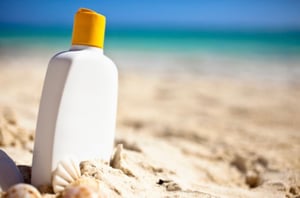 The Food and Drug Administration (FDA) announced a proposed rule that would update regulation requirements for most sunscreen products sold in the United States. So, if you plan on spending a lot of time in the sun this summer you should pay attention to the new suggested regulations for sunscreens. When it comes down to it, you can never be too careful out in the sun.
The Food and Drug Administration (FDA) announced a proposed rule that would update regulation requirements for most sunscreen products sold in the United States. So, if you plan on spending a lot of time in the sun this summer you should pay attention to the new suggested regulations for sunscreens. When it comes down to it, you can never be too careful out in the sun.
This announcement is significant because FDA guidelines for sunscreens haven’t been updated in several decades. And it's an important step in the FDA’s ongoing efforts to take into account modern science to ensure the safety and effectiveness of sunscreens. This is important because skin cancer is the most common form of cancer nationwide, with 1.6 million new cases reported in 2015 alone.
What are the new sunscreen guidelines?
The FDA proposal focuses on ensuring sunscreens are officially designated as being safe and effective with the two sun-blocking ingredients — zinc oxide and titanium dioxide — deemed sufficiently safe for use.
The FDA also proposed that the maximum sun protection factor (SPF) level increase from 50+ to 60+ in order to offer the best protection. Sunscreens that have an SPF of 15 or higher are required to have broad-spectrum protection. Sprays, oils, lotions, creams, gels, butters, pastes, ointments, and sticks are official FDA-sanctioned dosage forms for sunscreens.
The FDA states that labels should be clearer for consumers, identifying information such as active ingredients on the front of the package to make sunscreens more like other OTC drugs.
It’s also suggested that these labels include a notification of a skin-cancer and skin-aging alert for products that haven’t been proven to prevent skin cancer.
How can you protect yourself?
It's best to combine sunblock with sun-protective clothing when you go outside so you doesn’t have to worry about repeated application to sensitive areas such as the face, hands, and feet. But people tend to overlook sensitive parts like the eyelids, lips, and ears when putting on sunscreen.
When it comes to the eyelids, 100% ultraviolet (UV)-blocking sunglasses with wider side pieces are usually effective to protect the temples.
It's recommended to use sunscreen sticks on the forehead instead of creams or lotions, which can easily drip into your eyes and cause irritation once you begin to sweat.
Sunscreen sprays don’t offer reliable consistent coverage and it's advised to use sunscreen in another form for better results.
Another sensitive area people often miss with sunscreen is the lips. The lower lip is particularly sensitive and so sun protection in your lip products when outdoors is essential.
People with sensitive skin might want to look for sunscreens that contain physical blockers such as zinc oxide and titanium dioxide instead of chemical absorbers that seep into the skin.
There are a lot of good products to use. The best products are the ones that actually get used, so it’s important to find something you feel comfortable with and putting it everywhere you will need it — in your car, golf bag, workout bag. Also, mixing it up with sun-protective clothing, hats, sunglasses, avoidance of midday sun, shade, and other strategies works the best overall.
Always use sunscreen with an SPF of at least 30 and that has “broad-spectrum” on the label, meaning it protects against both ultraviolet A (UVA) and ultraviolet B (UVB) rays.
Pick a sunscreen with a smell and feel that you’ll want to use. It doesn’t matter how effective your sunscreen is if you never take it out and use it. Once you find one with the right protection, it can ultimately come down to personal preference.
Besides skin cancer risk, another incentive for buying sunscreen is because UV radiation can prematurely age your skin.
If you’re particularly active or will be sweating or swimming, you may want to find a sunscreen that is sweat-resistant or water-resistant.
In February, the FDA released a proposed ruling for new sunscreen guidelines. The FDA suggested a range of rules, from clearer package labels to safer materials used to make sunscreens to higher maximum SPF levels made available on the market. Opt for a sunscreen with an SPF of 30 or higher when heading outside, and apply about a half hour before sun exposure. Doctors urge people to reapply sunscreen every two hours you spend outside, and switch to a higher SPF of 50 or more if you plan on spending long stretches of time in the sun.

